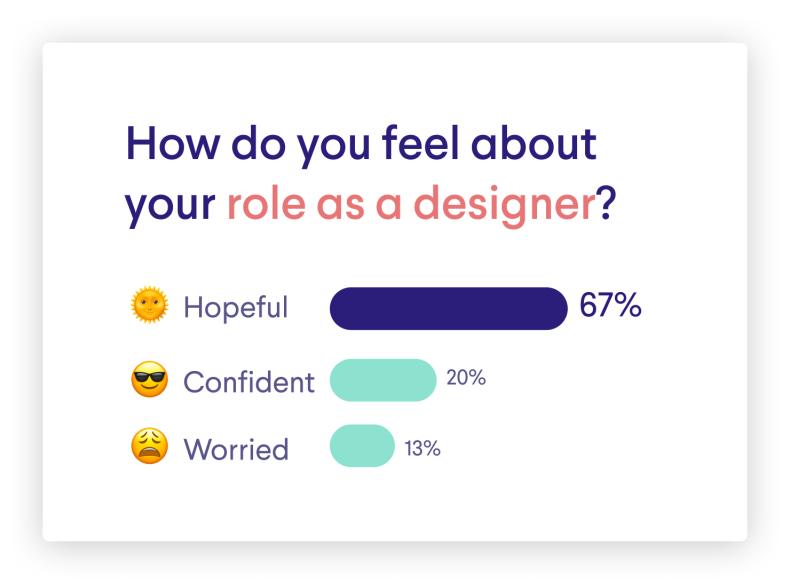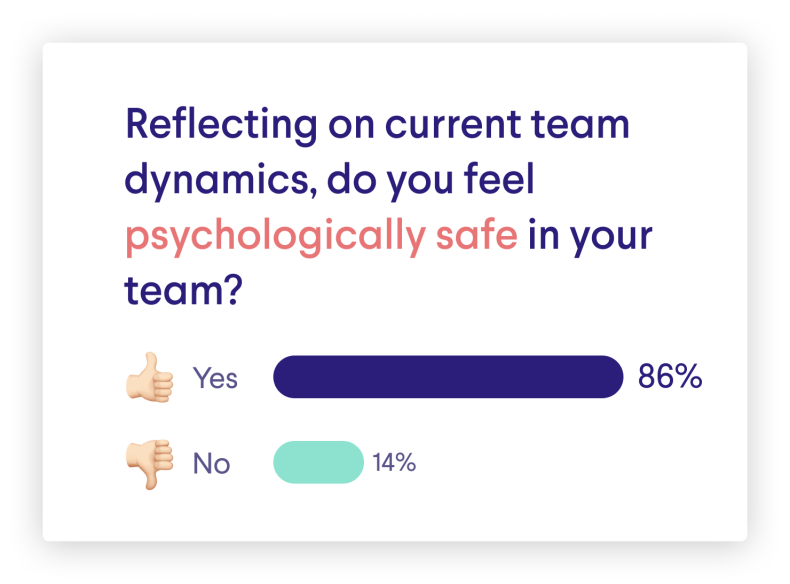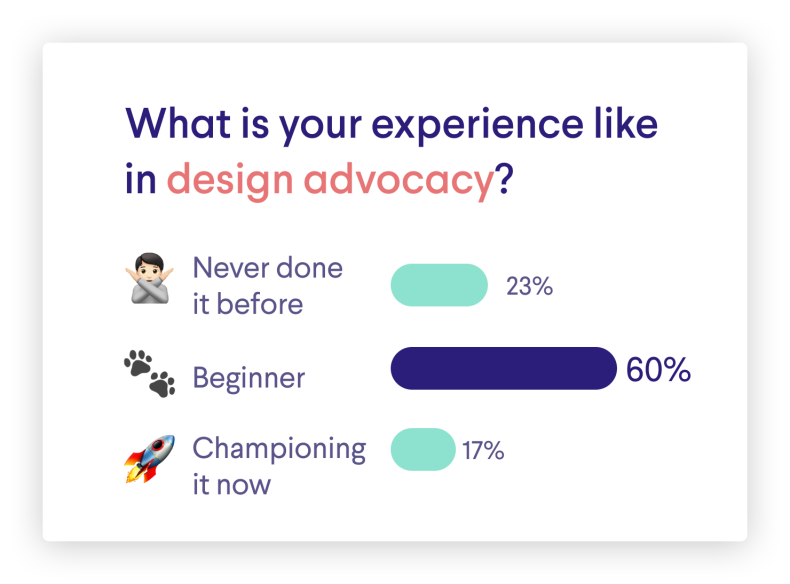Stampede Makers has always been our way to celebrate the spirit and love for the craftsmanship of designers and creators. In December 2023, we ran our Makers Edition 6. It is fully organised by the team at Stampede and over 100 people signed up.
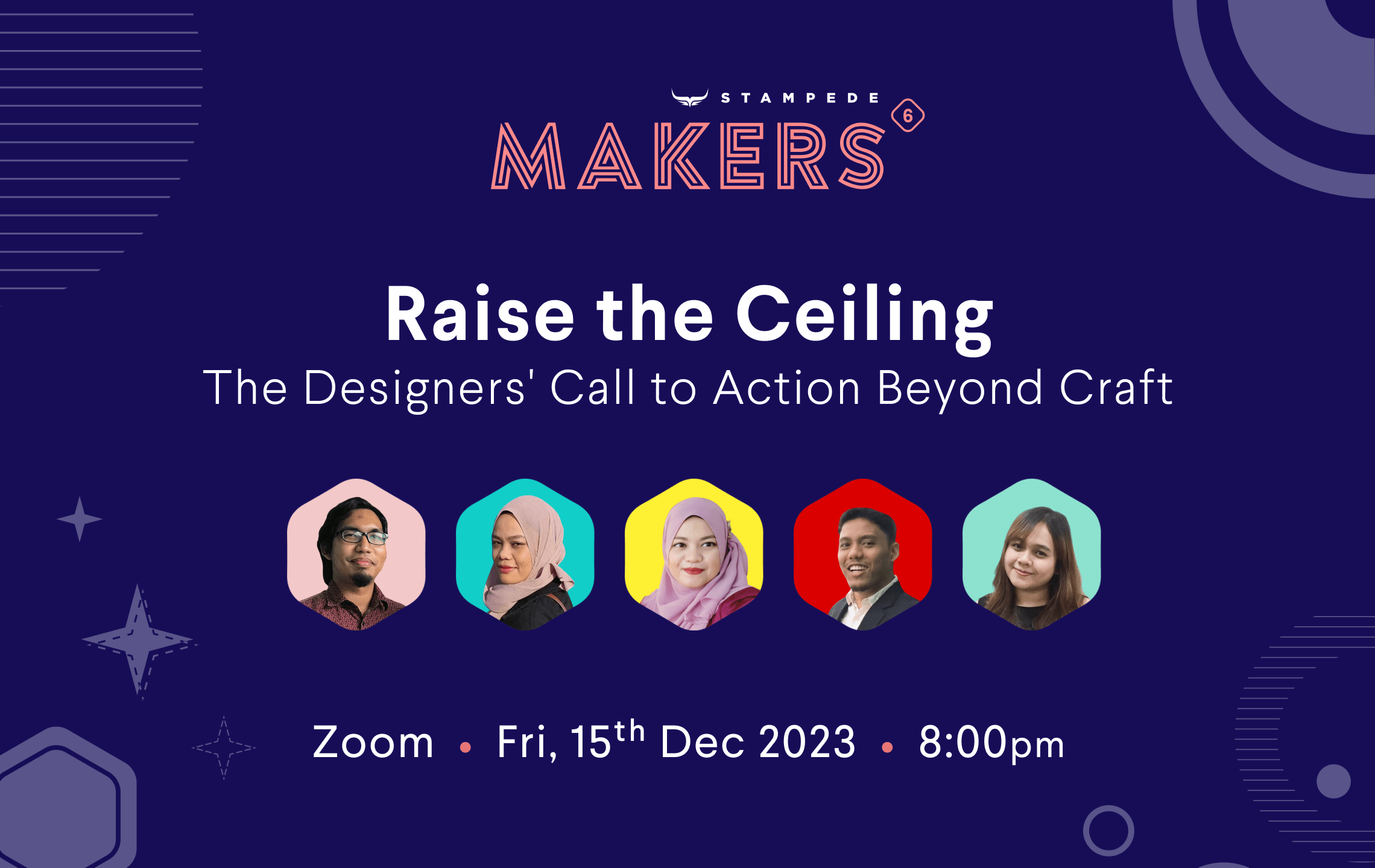
Throughout most of 2023, we’ve been curious about our role as designers and makers when the world needs us to go beyond the confines of our craft. This is us living in a house, one day looking at the ceiling and thinking “I wonder if it can go higher than that?”.
The ceiling is our perceived limit of roles and definition of design. The future will happen with or without designers; if we want to be an active part of it, we need to raise the ceiling.
In this edition, we look to extend these conversations from inside Stampede outward.
But first, the polls!
As participants started arriving, we wanted to take the temperature of the room, so Qi, the moderator, kicked things off with a quick poll.
We learned several interesting things about our fellow designers:
- People feel mostly hopeful and confident about their role as designers, but a few are worried.
- An overwhelming majority feel psychologically safe in their current team – fantastic sign!
- The majority who joined are beginners in design advocacy, which probably explains why the Design Advocacy breakout room garnered the most interest.
Asking Big Questions
In this talk, I shared my macro and micro reflections on the state of design in 2023. Here are a few big questions I had in my design journey.
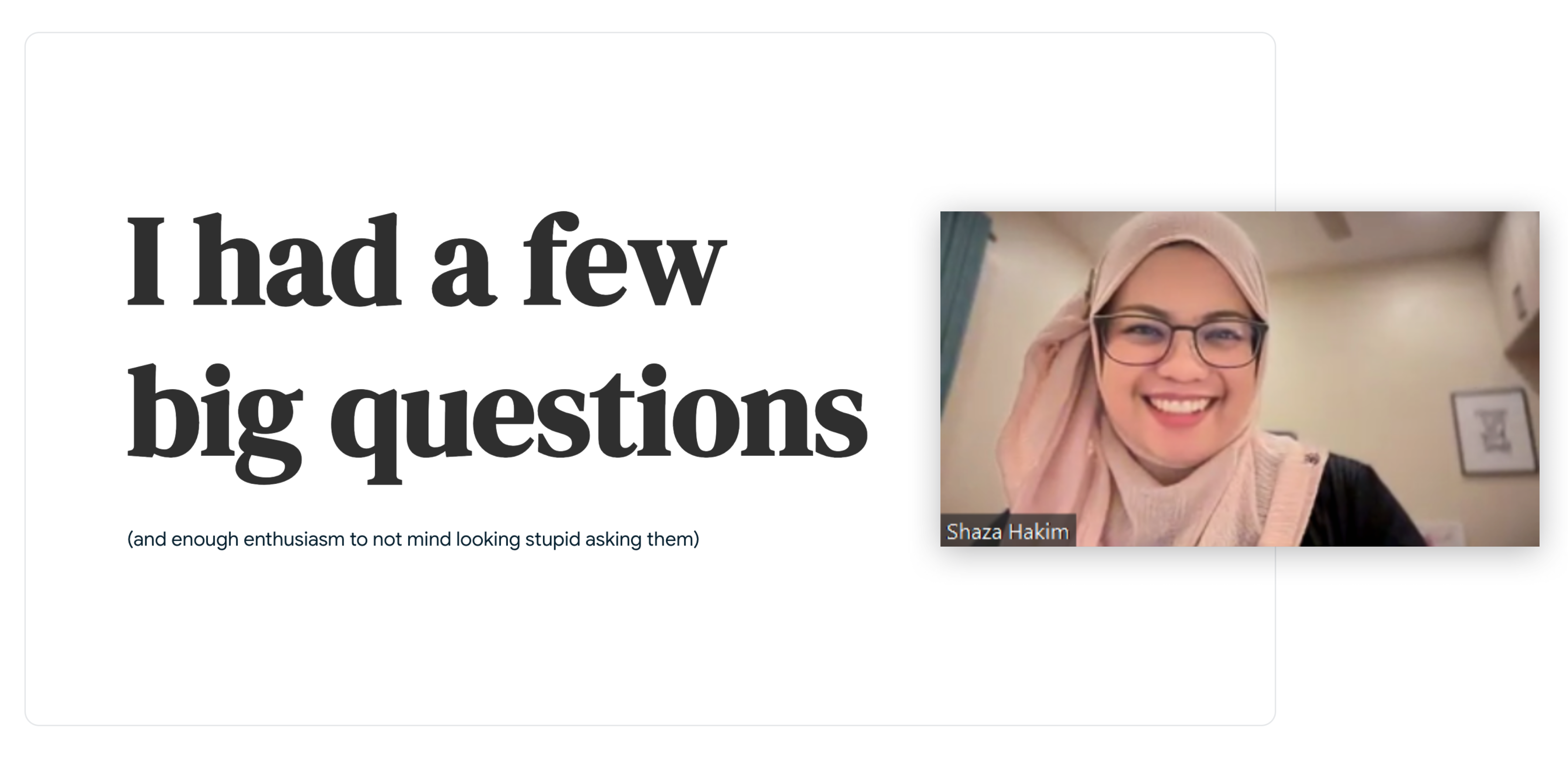
On designing in the era of automation and AI
Are designers being made redundant by automation? For low-level pixel pushing function, or derivative design using components from a library that can be automated, perhaps. But it is also an invitation to look at how designers can influence the human-AI experience. To do this, we must cultivate future-ready designers who are explorer-builders, emboldened and trans-disciplinary, who dare to push forth the meaning of interface beyond screens.
We must also be responsible for our creation. We’ve been mostly thinking short-term in product validation. Assessment of the long-term hedonic value of designed experiences and occupational stress resulting from workplace digitalisation and automation must enter our vocabulary if we are to be proponents of inclusive design.
On design relevancy and value
All around us, designers are being advised that we need to prove our value. What is unique about design that we need to do so when other disciplines like engineering don’t? In answering this, I found that the problem with design is its value manifests not within the design team itself, but in other business-critical areas.
Consider that if the design does its job well, the value is not measured in the number of Figma components inserts or interfaces we generate. The value design brings is in how we improve product conversion, increase customer success and satisfaction, and improve the speed and consistency of interface implementation for developers. So the value of design is real and all-affecting, only not within our discipline itself and not always in the short term. But remove a designer today, and the cost of servicing the design debt will become overwhelming real quickly.
On design quality
Designers are often seen as sufferers of process pedanticism. We’re guilty of following closely our process and taking the time necessary to maintain the integrity and quality of our work, often at the expense of moving fast and breaking things. On the other hand, the process is instrumental in focusing well before speeding up so we can attack problems smarter and with cost-effective precision. Therefore, the design process and innovation progress are not at odds with each other but should co-exist.
On design leadership and being good human beings to each other
We designers over-extend empathy to our users, collaborators and stakeholders, but we often forget to use it with each other. As leaders, we spend so much time being the shit umbrella that we sometimes forget to sow and nurture the ground under us so people can thrive. Care is a positive workplace currency, but those who care most passionately are often the first to burn out. As leaders, we need to ask our people and ourselves how to become better support systems for each other.
The shift from learning to making opportunities
Makers are inherent learners, though sometimes we could fall into the trap of learning without actually doing it or waiting for opportunities to arrive without creating them.
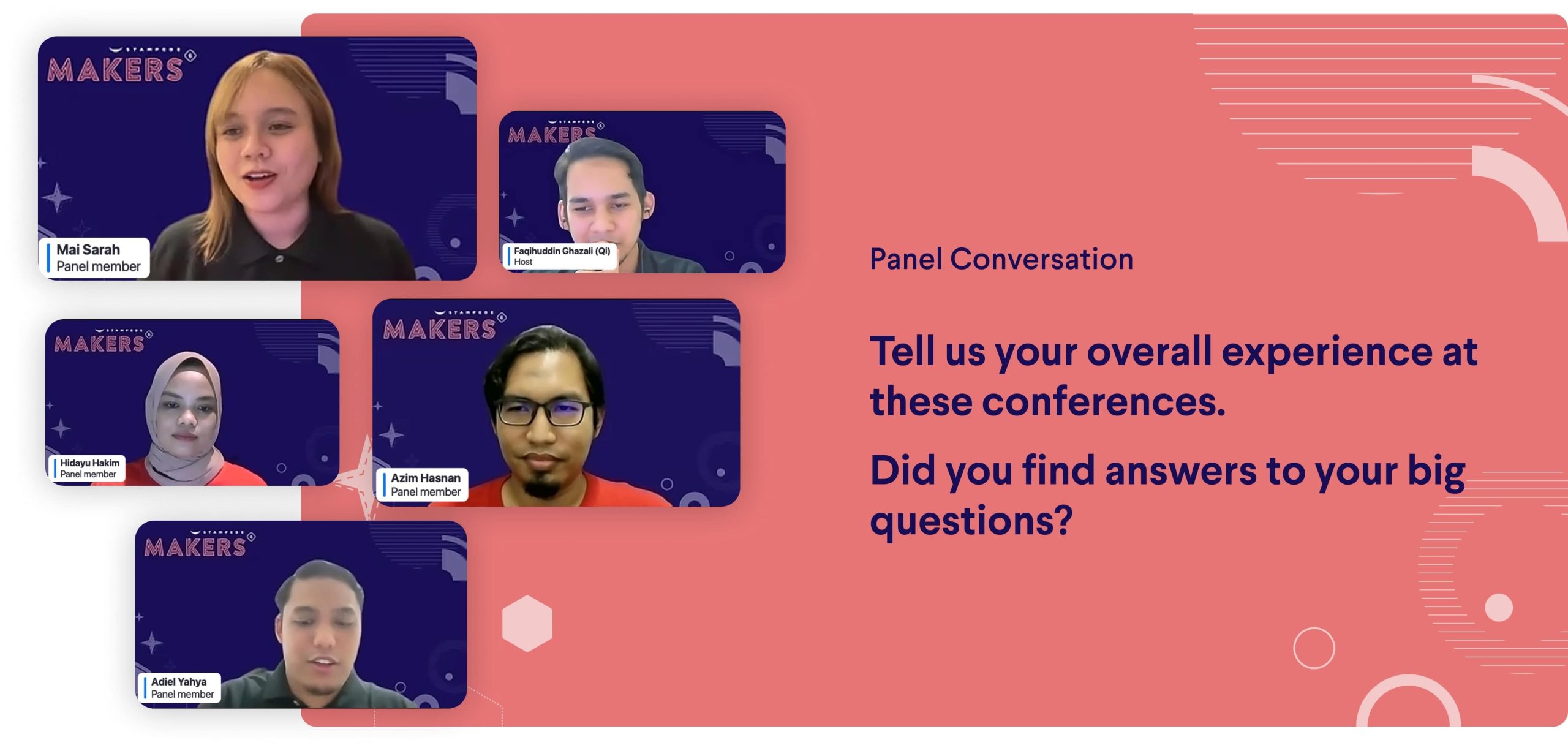
Four of our designers shared their observations and reflections on the shift they had to make in 2023.
On design advocacy, Mai Sarah shared her experience inviting non-designers into usability testing and product ideation sessions. When design is open and made visible to others, we start seeing a proliferation of design enthusiasts and allies, as Azim found in WUC. His conversations with others in WUC not only led him to new collaborative ventures but also exposed him to the breadth and depth of the UX field.
Reflecting on Eric Snowden’s wisdom, the VP of Design at Adobe, we highlighted the importance of empathy towards our teammates, beyond our users. Recognizing empathy as a crucial element for creating a sense of safety, Adiel advocated for some ways to foster psychological safety within a team. These include practicing open communication, seeking feedback regularly, and placing trust in the capabilities of the team.
We also talked about building a future-proof team, Hidayu shared her key takeaways from the Design Leaders conference, emphasizing the need to shift the design conversation from solving issues to understanding the real problem first. Building a future-proof team also means we need to be inclusive of other disciplines, leveraging new perspectives to reach our common goal, and ultimately raising the ceiling of our profession.
The after-party experiment
Every online event feels unceremoniously cut short and awkward at the end. The host said bye. People turned on their webcam for a split second to wave to everyone. Everyone then tried to hit the Leave Meeting button while maintaining that awkward smile.
We have come a long way with online events, yet the solution to this sudden withdrawal remains elusive.
The topics we chose this time were big – each could be its own Makers theme. As we looked for ways to get people to delve, expand, and connect over them meaningfully, it became clearer that an experiment was in order.
We figured nothing beats genuine connection around a topic you’re passionate about. What happens if we create intentional spaces for people to connect deeper around things they care about? Can we do that remotely?
We launched five after-party conversations, discussing big themes like growing future-ready design teams, amplifying design value, psychological safety, and stretching our craft’s breadth and depth. Our design apprentices, from various non-design backgrounds, also hosted their conversations on fusing old craft and new.
Despite the initial tech hiccup (because of Murphy’s Law), people stayed long into the night, conversing and sharing their takes so that together, we could move the industry into the future.
This is the very spirit of Stampede Makers.
— A massive thank you to everyone who made Makers more special with every edition. If you want to join Makers #7 in February, likely in person, watch our social media posts.
